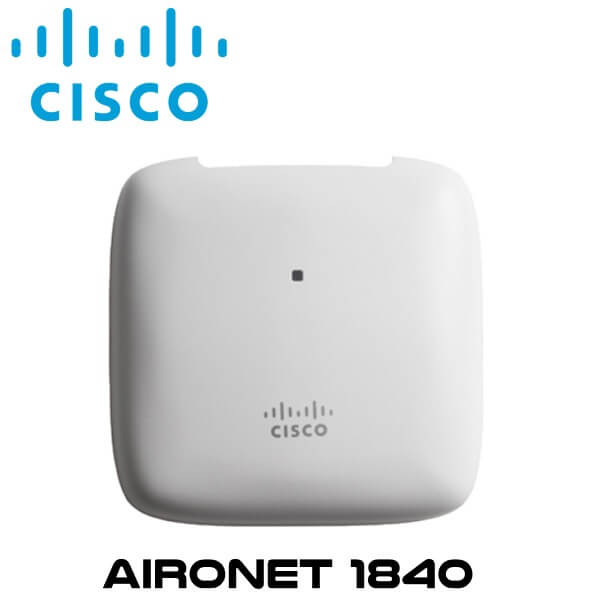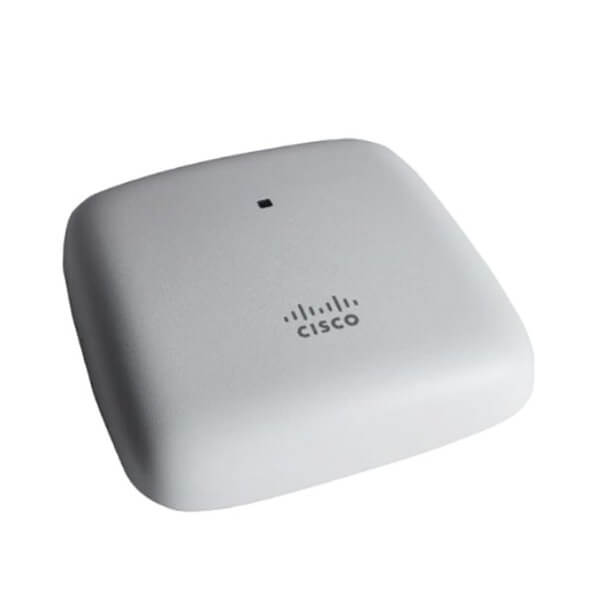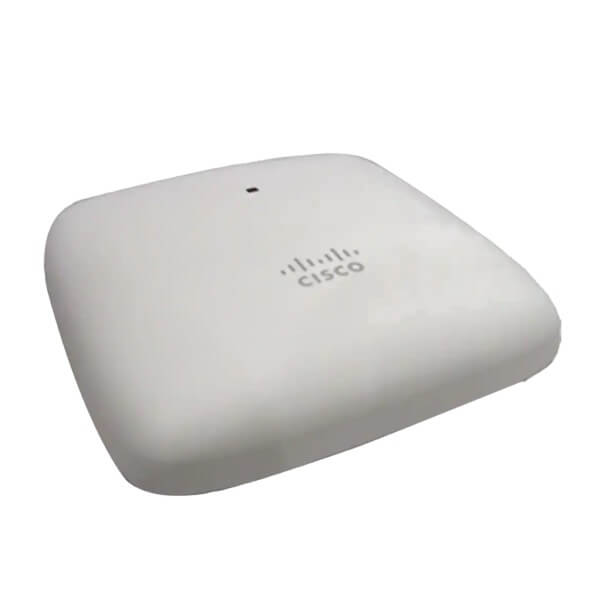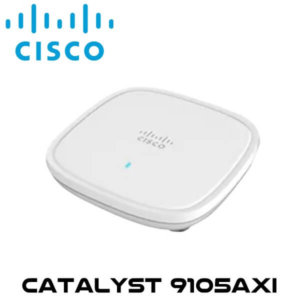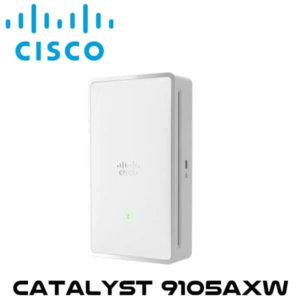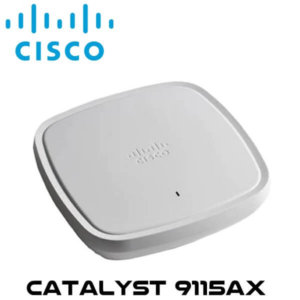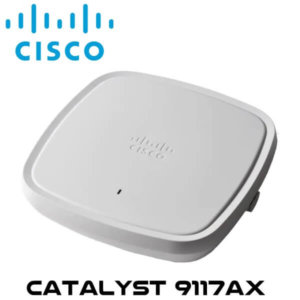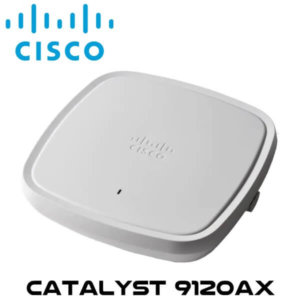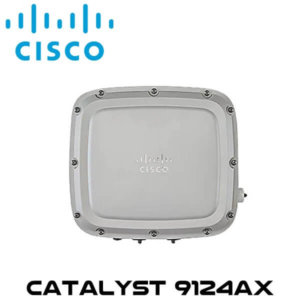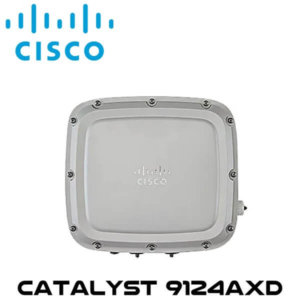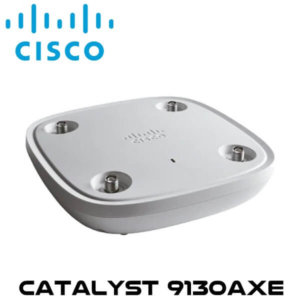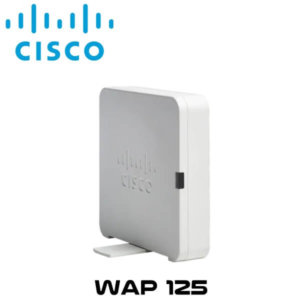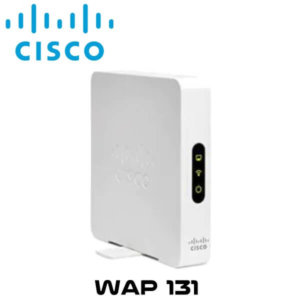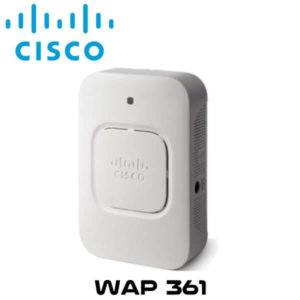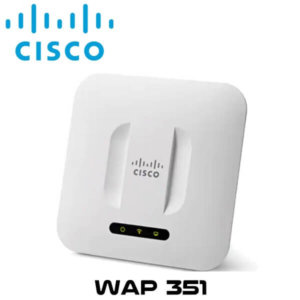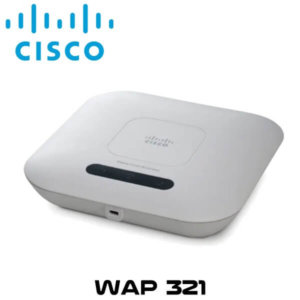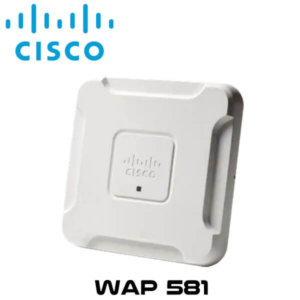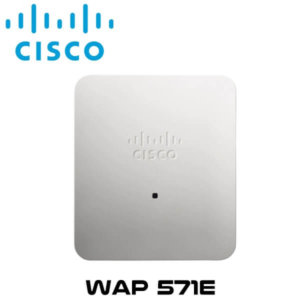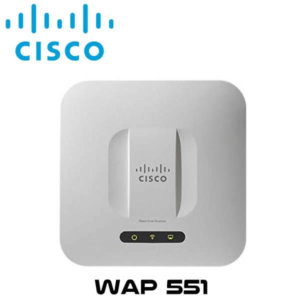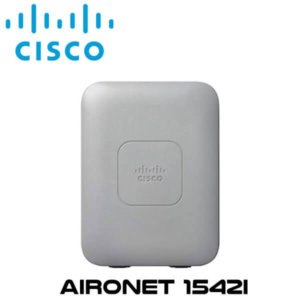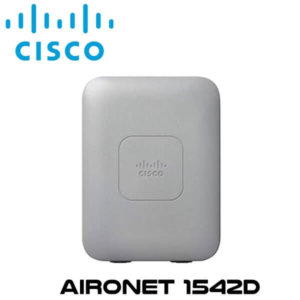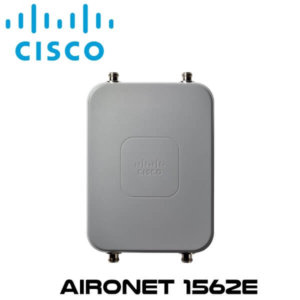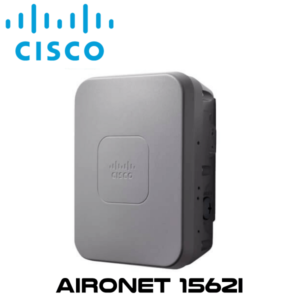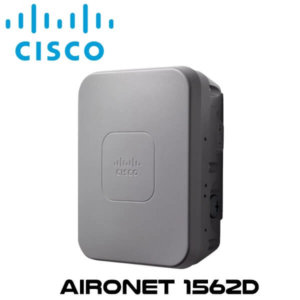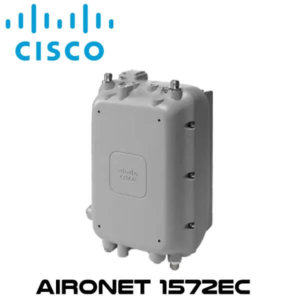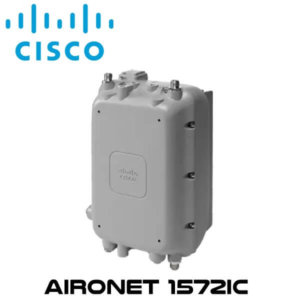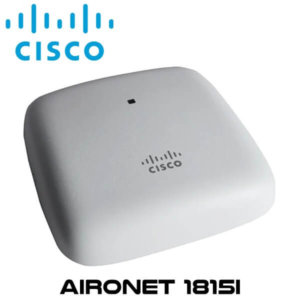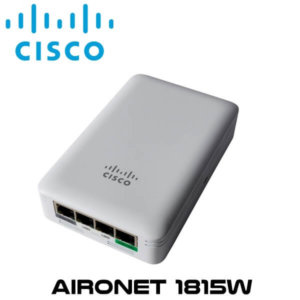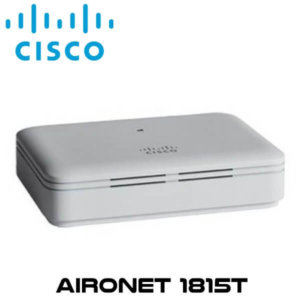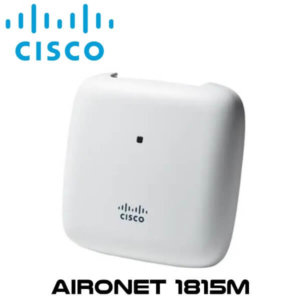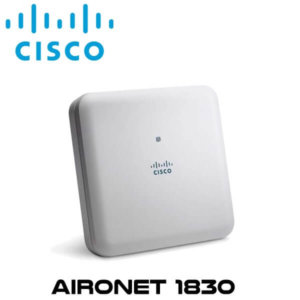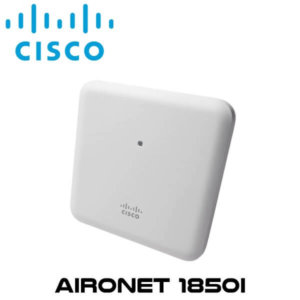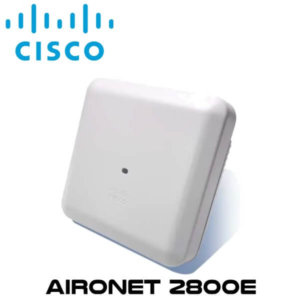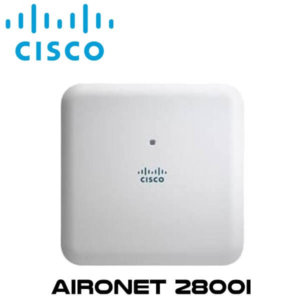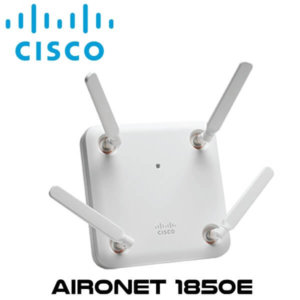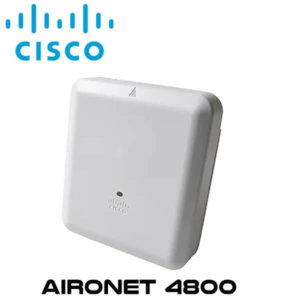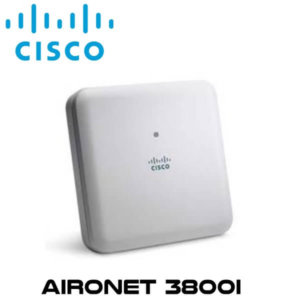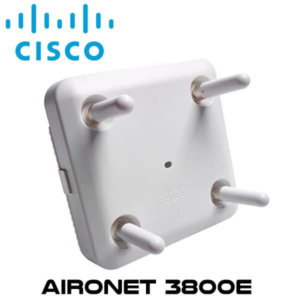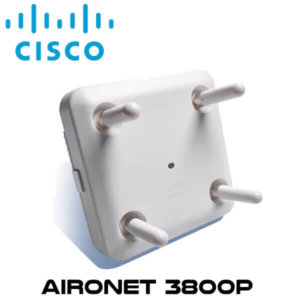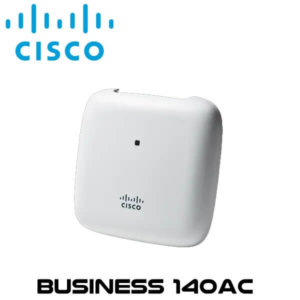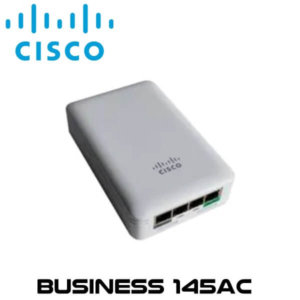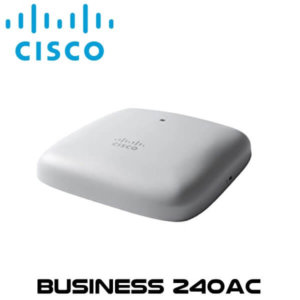Description
Cisco Aironet1840 Access Point Ghana
The Cisco Aironet1840 Ghana is equipped with 802.11ac Wave 2 features and Bluetooth Low Energy (BLE) for location-based services, making it ideal for small to mid-size enterprise deployments. Ideal for small and medium-sized networks, the Cisco Aironet1840 Ghana delivers industry-leading performance for enterprise and service provider markets via enterprise-class 4×4 MU-MIMO, four-spatial-stream access points that support the Institute of Electrical and Electronic Engineers (IEEE) 802.11ac Wave 2 standard. Integrated BLE radio enables location-based use cases such as wayfinding and asset tracking. This Cisco WiFi Ghana Access Point extends support to a new generation of Wi-Fi clients, such as smartphones, tablets, and high-performance laptops that have integrated 802.11ac Wave 1 or Wave 2 support.
With the Cisco Aironet1840 Ghana, you can secure remote workers or the micro-office. Any Cisco Aironet or Catalyst access point can function as an OfficeExtend access point (OEAP). With an OEAP, an employee at home or in a temporary micro-office will have access to the corporate SSID and the corporate network without the need to set up a VPN or have any advanced technical know-how. Moreover, Cisco User Defined Network, a feature available in Cisco DNA Center, allows IT to give end users control of their very own wireless network partition on a shared network. End users can then remotely and securely deploy their devices on this network. Perfect for university dormitories or extended hospital stays, Cisco User Defined Network grants both device security and control, allowing each user to choose who can connect to their network.
The Wi-Fi 6 readiness dashboard is a new dashboard in the Assurance menu of Cisco DNA Center. It will look through the inventory of all devices on the network and verify device, software, and client compatibility with the new Wi-Fi 6 standard. After upgrading, advanced wireless analytics will indicate performance and capacity gains as a result of the Wi-Fi 6 deployment. This is an incredible tool that will help your team define where and how the wireless network should be upgraded. It will also give you insights into the access point distribution by protocol (802.11 ac/n/abg), wireless airtime efficiency by protocol, and granular performance metrics.
Features
802.11ac Wave 1 and 2 capabilities
Featuring IEEE 802.11ac standard Cisco Aironet1840 Ghana, delivers a better experience in typical environments, and a more predictable performance for advanced applications such as 4K or 8K video, high-density high-definition collaboration apps, all-wireless offices and Internet-of-Things (IoT).
Multiuser Multiple-Input Multiple-Output (MU-MIMO) technology
Cisco Aironet1840 Ghana supports four spatial streams, MU-MIMO enables access points to split spatial streams between client devices, to maximize throughput.
Intelligent Capture
This Cisco WiFi Ghana boasts of intelligent capture probes the network and provides DNA Center with deep analysis. The software can track over 240 anomalies and instantaneously review all packets on demand, emulating the onsite network administrator. Intelligent Capture allows for more informed decisions on your wireless networks.
Cisco Mobility Express
With Mobility Express Cisco Aironet1840 Ghana, is designed for networks of all sizes, including small and medium-sized businesses and distributed enterprises. It provides industry-leading wireless LAN technology without the need for a physical controller or additional licenses.
Bluetooth 4.2
Cisco Aironet1840 Ghana is integrated BLE 4.2 radio to enable IoT use cases such as location tracking.
Cisco DNA support
Pairing the Aironet 1840 Access Points with the Cisco Digital Network Architecture (DNA) allows for a total network transformation. Cisco DNA allows you to truly understand your network with real-time analytics, quickly detect and contain security threats, and easily provide network-wide consistency through automation and virtualization. By decoupling network functions from the hardware, you can build and manage your entire wired and wireless network from a single user interface. Working together, the Cisco Aironet1840 Ghana and Cisco DNA offer such features as: Cisco DNA Spaces, Apple FastLane, Cisco Identity Services Engine, Cisco DNA Analytics and Assurance and much more.
Specifications
| Software |
|
|||||||||
| Supported wireless LAN controllers |
|
|||||||||
| 802.11n version 2.0 (and related) capabilities |
|
|||||||||
| 802.11ac |
|
|||||||||
| Integrated antenna |
|
|||||||||
| Interfaces |
|
|||||||||
| Indicators | Status LED indicates boot loader status, association status, operating status, boot loader warnings, boot loader errors | |||||||||
| Dimensions (W x L x H) | Access point (without mounting brackets): AIR-AP1840I: 7 x 7 x 1.5 in | |||||||||
| Weight | 0.94 lb (0.43 kg) | |||||||||
| Input power requirements |
Note: When 802.3af PoE is the source of power, then USB port will be off |
|||||||||
| Power draw | Cisco AIR-AP1840I
|
|||||||||
| Environmental | Cisco AIR-AP1840I
Note: when ambient operating temperature exceeds 40°C, then the radio transmit duty cycle may be limited to not greater than 50%. |
|||||||||
| System memory | 1GB MB DRAM
256 MB flash |
|||||||||
| Warranty | Limited lifetime hardware warranty | |||||||||
| Available transmit power settings | 2.4 GHz
|
5 GHz
|
||||||||
| Frequency band and 20-MHz operating channels | A (A regulatory domain):
B (B regulatory domain):
C (C regulatory domain):
D (D regulatory domain):
E (E regulatory domain):
F (F regulatory domain):
G (G regulatory domain):
H (H regulatory domain):
|
I (I regulatory domain):
K (K regulatory domain):
N (N regulatory domain):
Q (Q regulatory domain):
R (R regulatory domain):
S (S regulatory domain):
T (T regulatory domain):
Z (Z regulatory domain):
|
||||||||
| Maximum number of non-overlapping channels | 2.4 GHz
|
5 GHz
|
||||||||
| Compliance standards |
|
|||||||||
| Data rates supported | 802.11b: 1, 2, 5.5, and 11 Mbps | |||||||||
| 802.11a/g: 6, 9, 12, 18, 24, 36, 48, and 54 Mbps | ||||||||||
| 802.11n data rates on 2.4 GHz (only 20 MHz and MCS 0 to MCS 15) and 5GHz | ||||||||||
| MCS Index | GI = 800 ns | GI = 800 ns | GI = 400 ns | GI = 400 ns | ||||||
| 20-MHz Rate (Mbps) | 40-MHz Rate (Mbps) | 20-MHz Rate (Mbps) | 40-MHz Rate (Mbps) | |||||||
| 0 | 6.5 | 13.5 | 7.2 | 15 | ||||||
| 1 | 13 | 27 | 14.4 | 30 | ||||||
| 2 | 19.5 | 40.5 | 21.7 | 45 | ||||||
| 3 | 26 | 54 | 28.9 | 60 | ||||||
| 4 | 39 | 81 | 43.3 | 90 | ||||||
| 5 | 52 | 108 | 57.8 | 120 | ||||||
| 6 | 58.5 | 121.5 | 65 | 135 | ||||||
| 7 | 65 | 135 | 72.2 | 150 | ||||||
| 8 | 13 | 27 | 14.4 | 30 | ||||||
| 9 | 26 | 54 | 28.9 | 60 | ||||||
| 10 | 39 | 81 | 43.3 | 90 | ||||||
| 11 | 52 | 108 | 57.8 | 120 | ||||||
| 12 | 78 | 162 | 86.7 | 180 | ||||||
| 13 | 104 | 216 | 115.6 | 240 | ||||||
| 14 | 117 | 243 | 130 | 270 | ||||||
| 15 | 130 | 270 | 144.4 | 300 | ||||||
| 16 | 19.5 | 40.5 | 21.7 | 45 | ||||||
| 17 | 39 | 81 | 43.4 | 90 | ||||||
| 18 | 58.5 | 121.5 | 65 | 135 | ||||||
| 19 | 78 | 162 | 86.7 | 180 | ||||||
| 20 | 117 | 243 | 130 | 270 | ||||||
| 21 | 156 | 324 | 173.3 | 360 | ||||||
| 22 | 175.5 | 364.5 | 195 | 405 | ||||||
| 23 | 195 | 405 | 216.7 | 450 | ||||||
| 24 | 26 | 54 | 28.9 | 60 | ||||||
| 25 | 52 | 108 | 57.8 | 120 | ||||||
| 26 | 78 | 162 | 86.7 | 180 | ||||||
| 27 | 104 | 216 | 115.6 | 240 | ||||||
| 28 | 156 | 324 | 173.3 | 360 | ||||||
| 29 | 208 | 432 | 173.3 | 480 | ||||||
| 30 | 234 | 486 | 260 | 540 | ||||||
| 31 | 260 | 540 | 288.9 | 600 | ||||||
| 802.11ac data rates (5 GHz): | ||||||||||
| MCS Index |
Spatial Streams | GI = 800 ns | GI = 400 ns | |||||||
| 20-MHz Rate (Mbps) | 40-MHz Rate (Mbps) | 80-MHz Rate (Mbps) | 20-MHz Rate (Mbps) | 40-MHz Rate (Mbps) | 80-MHz Rate (Mbps) | |||||
| 0 | 1 | 6.5 | 13.5 | 29.3 | 7.2 | 15 | 32.5 | |||
| 1 | 1 | 13 | 27 | 58.5 | 14.4 | 30 | 65 | |||
| 2 | 1 | 19.5 | 40.5 | 87.8 | 21.7 | 45 | 97.5 | |||
| 3 | 1 | 26 | 54 | 117 | 28.9 | 60 | 130 | |||
| 4 | 1 | 39 | 81 | 175.5 | 43.3 | 90 | 195 | |||
| 5 | 1 | 52 | 108 | 234 | 57.8 | 120 | 260 | |||
| 6 | 1 | 58.5 | 121.5 | 263.3 | 65 | 135 | 292.5 | |||
| 7 | 1 | 65 | 135 | 292.5 | 72.2 | 150 | 325 | |||
| 8 | 1 | 78 | 162 | 351 | 86.7 | 180 | 390 | |||
| 9 | 1 | – | 180 | 390 | – | 200 | 433.3 | |||
| MCS Index |
Spatial Streams | GI = 800 ns | GI = 400 ns | |||||||
| 20-MHz Rate (Mbps) | 40-MHz Rate (Mbps) | 80-MHz Rate (Mbps) | 20-MHz Rate (Mbps) | 40-MHz Rate (Mbps) | 80-MHz Rate (Mbps) | |||||
| 0 | 2 | 13 | 27 | 58.5 | 14.4 | 30 | 65 | |||
| 1 | 2 | 26 | 54 | 117 | 28.9 | 60 | 130 | |||
| 2 | 2 | 39 | 81 | 175.5 | 43.3 | 90 | 195 | |||
| 3 | 2 | 52 | 108 | 234 | 57.8 | 120 | 260 | |||
| 4 | 2 | 78 | 162 | 351 | 86.7 | 180 | 390 | |||
| 5 | 2 | 104 | 216 | 468 | 115.6 | 240 | 520 | |||
| 6 | 2 | 117 | 243 | 526.5 | 130 | 270 | 585 | |||
| 7 | 2 | 130 | 270 | 585 | 144.4 | 300 | 650 | |||
| 8 | 2 | 156 | 324 | 702 | 173.3 | 360 | 780 | |||
| 9 | 2 | – | 360 | 780 | – | 400 | 866.7 | |||
| MCS Index |
Spatial Streams | GI = 800 ns | GI = 400 ns | |||||||
| 20-MHz Rate (Mbps) | 40-MHz Rate (Mbps) | 80-MHz Rate (Mbps) | 20-MHz Rate (Mbps) | 40-MHz Rate (Mbps) | 80-MHz Rate (Mbps) | |||||
| 0 | 3 | 19.5 | 40.5 | 87.8 | 21.7 | 45 | 97.5 | |||
| 1 | 3 | 39 | 81 | 175.5 | 43.3 | 90 | 195 | |||
| 2 | 3 | 58.5 | 121.5 | 263.3 | 65 | 135 | 292.5 | |||
| 3 | 3 | 78 | 162 | 351 | 86.7 | 180 | 390 | |||
| 4 | 3 | 117 | 243 | 526.5 | 130 | 270 | 585 | |||
| 5 | 3 | 156 | 324 | 702 | 173.3 | 360 | 780 | |||
| 6 | 3 | 175.5 | 364.5 | – | 195 | 405 | – | |||
| 7 | 3 | 195 | 405 | 877.5 | 216.7 | 450 | 975 | |||
| 8 | 3 | 234 | 486 | 1053 | 260 | 540 | 1170 | |||
| 9 | 3 | 260 | 540 | 1170 | 288.9 | 600 | 1300 | |||
| MCS Index |
Spatial Streams | GI = 800 ns | GI = 400 ns | |||||||
| 20-MHz Rate (Mbps) | 40-MHz Rate (Mbps) | 80-MHz Rate (Mbps) | 20-MHz Rate (Mbps) | 40-MHz Rate (Mbps) | 80-MHz Rate (Mbps) | |||||
| 0 | 4 | 26 | 54 | 117 | 28.8 | 60 | 130 | |||
| 1 | 4 | 52 | 108 | 234 | 57.8 | 120 | 260 | |||
| 2 | 4 | 78 | 162 | 351 | 86.7 | 180 | 390 | |||
| 3 | 4 | 104 | 216 | 468 | 115.6 | 240 | 520 | |||
| 4 | 4 | 156 | 324 | 702 | 173.3 | 360 | 780 | |||
| 5 | 4 | 208 | 432 | 936 | 231.1 | 480 | 1040 | |||
| 6 | 4 | 234 | 486 | 1053 | 260 | 540 | 1170 | |||
| 7 | 4 | 260 | 540 | 1170 | 288.9 | 600 | 1300 | |||
| 8 | 4 | 312 | 648 | 1404 | 346.7 | 720 | 1560 | |||
| 9 | 4 | – | 720 | 1560 | – | 800 | 1733.3 | |||
Transmit Power and Receive Sensitivity
| Transmit Power and Receive Sensitivity | |||||
| 1 Mbps | 5-GHz Radio | 2.4-GHz Radio | |||
| Spatial Streams | Total Tx Power (dBm) | Rx Sensitivity (dBm) | Total Tx Power (dBm) | Rx Sensitivity (dBm) | |
| 802.11/11b | |||||
| 1 Mbps | 1 | – | – | 20 | -99 |
| 11 Mbps | 1 | – | – | 20 | -91 |
| 802.11a/g | |||||
| 6 Mbps | 1 | 23 | -94 | 20 | -93 |
| 24 Mbps | 1 | 23 | -86 | 20 | -85 |
| 54 Mbps | 1 | 23 | -77 | 20 | -76 |
| 802.11n HT20 | |||||
| MCS0 | 1 | 23 | -94 | 20 | -93 |
| MCS4 | 1 | 23 | -81 | 20 | -81 |
| MCS7 | 1 | 23 | -74 | 20 | -73 |
| MCS8 | 2 | 23 | -93 | 20 | -93 |
| MCS12 | 2 | 23 | -81 | 20 | -81 |
| MCS15 | 2 | 23 | -75 | 20 | -75 |
| MCS16 | 3 | 23 | -93 | – | – |
| MCS20 | 3 | 23 | -81 | – | – |
| MCS23 | 3 | 23 | -74 | – | – |
| MCS24 | 4 | 23 | -92 | – | – |
| MCS28 | 4 | 23 | -82 | – | – |
| MCS31 | 4 | 23 | -75 | – | – |
| 802.11n HT40 | |||||
| MCS0 | 1 | 23 | -91 | – | – |
| MCS4 | 1 | 23 | -79 | – | – |
| MCS7 | 1 | 23 | -72 | – | – |
| MCS8 | 2 | 23 | -90 | – | – |
| MCS12 | 2 | 23 | -78 | – | – |
| MCS15 | 2 | 23 | -71 | – | – |
| MCS16 | 3 | 23 | -89 | – | – |
| MCS20 | 3 | 23 | -78 | – | – |
| MCS23 | 3 | 23 | -70 | – | – |
| MCS24 | 4 | 23 | -90 | – | – |
| MCS28 | 4 | 23 | -79 | – | – |
| MCS31 | 4 | 23 | -72 | – | – |
| 802.11ac VHT20 | |||||
| MCS0 | 1 | 23 | -94 | – | – |
| MCS4 | 1 | 23 | -81 | – | – |
| MCS7 | 1 | 23 | -74 | – | – |
| MCS8 | 1 | 23 | -70 | – | – |
| MCS9 | 1 | 23 | NA | – | – |
| MCS0 | 2 | 23 | -92 | – | – |
| MCS4 | 2 | 23 | -81 | – | – |
| MCS7 | 2 | 23 | -73 | – | – |
| MCS8 | 2 | 23 | -68 | – | – |
| MCS9 | 2 | 23 | NA | – | – |
| MCS0 | 3 | 23 | -92 | – | – |
| MCS4 | 3 | 23 | -81 | – | – |
| MCS7 | 3 | 23 | -73 | – | – |
| MCS8 | 3 | 23 | -68 | – | – |
| MCS9 | 3 | 23 | -67 | – | – |
| MCS0 | 4 | 23 | -91 | – | – |
| MCS4 | 4 | 23 | -80 | – | – |
| MCS7 | 4 | 23 | -73 | – | – |
| MCS8 | 4 | 23 | -68 | – | – |
| MCS9 | 4 | 23 | NA | – | – |
| 802.11ac VHT40 | |||||
| MCS0 | 1 | 23 | -91 | – | – |
| MCS4 | 1 | 23 | -79 | – | – |
| MCS7 | 1 | 23 | -72 | – | – |
| MCS8 | 1 | 23 | -67 | – | – |
| MCS9 | 1 | 23 | -66 | – | – |
| MCS0 | 2 | 23 | -90 | – | – |
| MCS4 | 2 | 23 | -78 | – | – |
| MCS7 | 2 | 23 | -71 | – | – |
| MCS8 | 2 | 23 | -66 | – | – |
| MCS9 | 2 | 23 | -65 | – | – |
| MCS0 | 3 | 23 | -89 | – | – |
| MCS4 | 3 | 23 | -78 | – | – |
| MCS7 | 3 | 23 | -71 | – | – |
| MCS8 | 3 | 23 | -64 | – | – |
| MCS9 | 3 | 23 | -62 | – | – |
| MCS0 | 4 | 23 | -88 | – | – |
| MCS4 | 4 | 23 | -78 | – | – |
| MCS7 | 4 | 23 | -70 | – | – |
| MCS8 | 4 | 23 | -65 | – | – |
| MCS9 | 4 | 23 | -64 | – | – |
| 802.11ac VHT80 | |||||
| MCS0 | 1 | 23 | -88 | – | – |
| MCS4 | 1 | 23 | -76 | – | – |
| MCS7 | 1 | 23 | -68 | – | – |
| MCS8 | 1 | 23 | -64 | – | – |
| MCS9 | 1 | 23 | -62 | – | – |
| MCS0 | 2 | 23 | -87 | – | – |
| MCS4 | 2 | 23 | -75 | – | – |
| MCS7 | 2 | 23 | -68 | – | – |
| MCS8 | 2 | 23 | -63 | – | – |
| MCS9 | 2 | 23 | -62 | – | – |
| MCS0 | 3 | 23 | -86 | – | – |
| MCS4 | 3 | 23 | -75 | – | – |
| MCS7 | 3 | 23 | -67 | – | – |
| MCS8 | 3 | 23 | -62 | – | – |
| MCS9 | 3 | 23 | -61 | – | – |
| MCS0 | 4 | 23 | -85 | – | – |
| MCS4 | 4 | 23 | -74 | – | – |
| MCS7 | 4 | 23 | -67 | – | – |
| MCS8 | 4 | 23 | -61 | – | – |
| MCS9 | 4 | 23 | -59 | – | – |


